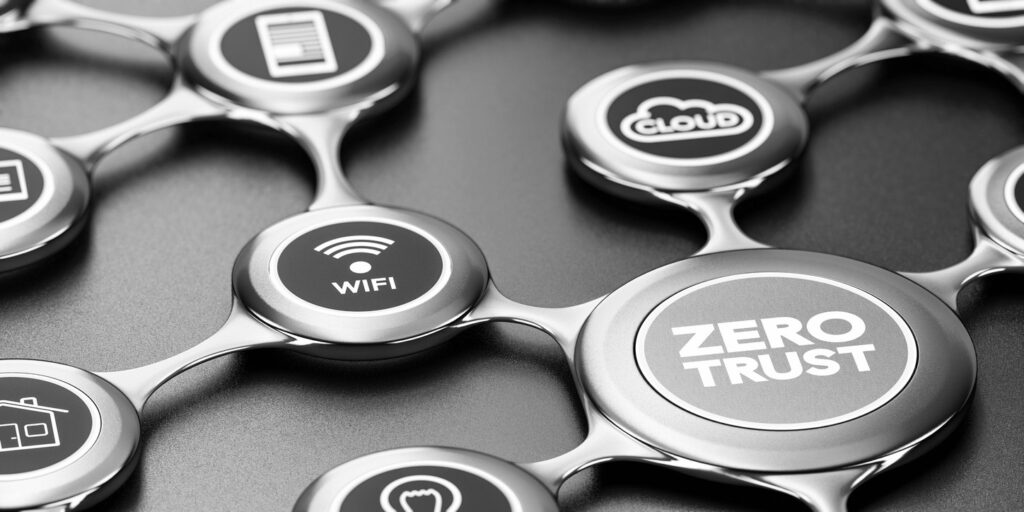Research Trends and Insights: Top Trends part 3

3D illustration of a blue network with icons and the text zero trust written on the front. Black background. Concept of secured network.
by Jonathan Sanders, Director, Research, GovExec
The telework phenomenon has been a tour de force in culture for over two years now. We have all done our phishing courses, taken a multi-factor authentication approach to all Apps, and replied to the on again off again phish test emails. Like most of you, I have rolled my eyes at these here and there, balking at the absurdity of these “threats”, but the truth is, we’ve all been duped before.
The rapid shift of moving the physical working environment into a digital environment, combined with the adoption to telework, creates a litany of new endpoints and vulnerabilities to defend against—requiring a frequent review of our capability to remain ahead of our adversaries.
Cybersecurity is setting the stage as a government-wide top priority
Our survey respondents note that 84% of federal employees ranked cybersecurity as a very important to extremely important initiative, and 73% anticipate cybersecurity having a higher or much higher priority than it has today. 72% also report that they are always using two-step authentication in order to better secure their networks, a net positive step to better monitoring government networks.
We are witnessing first-hand a massive shift in mindset as to how the federal government conducts cyber practices, underpinned by President Biden’s Executive Order on Improving the Nation’s Cybersecurity released earlier this year. Among many additions, the executive order calls for the modernization and implementation of stronger cybersecurity standards across the federal government for information and operational technology. From cloud services to zero-trust architecture, federal agencies will continue to research methodologies and tools to meet the ever-evolving cyber battlefield.
Zero trust is gaining traction – FAST
A dispersed workforce has tested traditional perimeter security during the pandemic. As a result, the zero trust model is quickly emerging as a top cybersecurity focus across the federal government.
A GBC survey found that 75% of government employees think that zero trust is very or extremely important to their cybersecurity strategy. This indicates that not only is there widespread visibility, but also a large interest in zero trust in strategy setting moving forward. The importance of zero trust—combined with findings mentioned earlier that federal government employees believe they will be working remotely more frequently—indicates that zero trust will provide more value than ever before for the modern government workforce.
Whether a reprioritization of a familiar task like data management and cybersecurity, or the integration of emerging trends like widespread telework or zero trust architectures, it is safe to say the trends of 2022 will go on to shape government markets for years to come.
